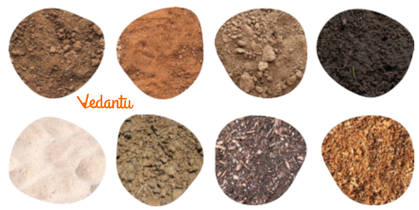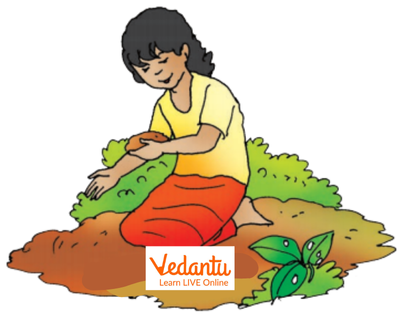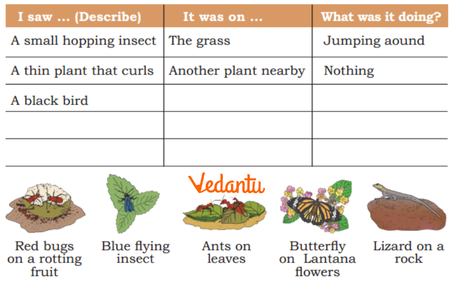Plants And Animals Live Together Questions and Answers - Free PDF Download
FAQs on NCERT Solutions For Class 3 Evs Chapter 5 Plants And Animals Live Together - 2025-26
1. What are the official NCERT Solutions for Class 3 EVS Chapter 5 ‘Chhotu’s House’ based on the 2025–26 CBSE syllabus?
The official NCERT Solutions for Class 3 EVS Chapter 5 ‘Chhotu’s House’ provide stepwise, CBSE-approved answers for all textbook exercises and intext questions, following the exact NCERT pattern for the 2025–26 syllabus. These solutions explain each answer in simple language as required by CBSE and are ideal for exam and homework preparation.
2. Where can I download the NCERT Solutions for Class 3 EVS Chapter 5 PDF for free?
You can access or download the NCERT Solutions for Class 3 EVS Chapter 5 PDF for free from trusted educational platforms like Vedantu. These solutions are organized by chapter and exercise, fully matching the CBSE 2025–26 curriculum and including all questions with correct, stepwise answers for student use.
3. What type of NCERT pattern questions are solved in Chhotu’s House, Class 3 EVS Chapter 5?
Chhotu’s House features NCERT pattern questions like fill in the blanks, short answer, match the following, and application-based questions. All official NCERT solutions for Class 3 EVS Chapter 5 follow CBSE guidelines and include stepwise explanations as per textbook format.
4. Are the exercise answers for Class 3 EVS Chapter 5 provided in CBSE format with stepwise explanation?
Yes, each exercise and intext answer for Class 3 EVS Chapter 5 is provided in the CBSE-approved format, with clear, stepwise solutions that adhere strictly to the latest NCERT/CBSE 2025–26 answer guidelines. Complex questions are broken down for easy understanding as per the textbook method.
5. Which topics and activities are covered in the NCERT Solutions for Chhotu’s House, Class 3 EVS?
The solutions for Chhotu’s House cover all textbook activities like observing a house, discussing types of shelters, understanding needs of animals and humans for shelter, and application questions based on daily life experiences. All activities are answered in NCERT answer key style for CBSE exams.
6. How do I answer ‘Why did Chhotu choose the pipe as his house?’ following the NCERT answer format?
Answer as per NCERT format: Chhotu chose the pipe as his house because it provided him shelter from rain, sun, heat, and cold. He also made separate areas inside for different activities, similar to rooms in a house, following the stepwise NCERT answer method.
7. Does the NCERT Solutions for Class 3 EVS Chapter 5 help with board-approved application questions?
Yes, the solutions are based on CBSE 2025–26 approved application and reasoning questions from the Class 3 EVS textbook. Each answer follows the NCERT/CBSE structure and is designed to help students understand the method of solving such questions step by step.
8. Can I use these Class 3 EVS Chapter 5 NCERT Solutions for quick revision before annual exams?
Absolutely, these NCERT Solutions for Class 3 EVS Chapter 5 ‘Chhotu’s House’ cover every exercise and intext question in a concise, CBSE pattern, making them ideal for last-minute revision and exam practice as per the 2025–26 board guidelines.
9. How to write answers for ‘Why do we need a house?’ as per the CBSE Class 3 EVS answer key?
In CBSE Class 3 EVS format: We need a house for protection from weather, animals, thieves, and to live comfortably. A house gives us a safe and private place to stay, keeping us healthy and happy, as explained in stepwise, NCERT-approved answers.
10. What is the stepwise method to attempt match-the-following questions in Class 3 EVS Chapter 5?
For match-the-following in Class 3 EVS Chapter 5, first read both columns carefully, then find correct pairs by matching each item logically, and finally write the corresponding letter or description, ensuring your answer matches the NCERT/CBSE 2025–26 stepwise answer key format.
11. Are these NCERT Solutions valid for term 2 and final exams according to latest CBSE changes?
Yes, these NCERT Solutions for Class 3 EVS Chapter 5 are fully updated as per the official CBSE 2025–26 guidelines and are valid for both term 2 and final examinations. Answers follow the step-by-step CBSE-approved format required for scoring well.
12. What are the most common mistakes to avoid while writing answers to Chhotu’s House NCERT questions?
Common mistakes include not following the NCERT stepwise answer structure, giving incomplete points (like missing out on ‘protection from animals’ or ‘weather’), and not connecting answers to textbook activities. Always use complete sentences and check solutions for correctness as per CBSE method.


































